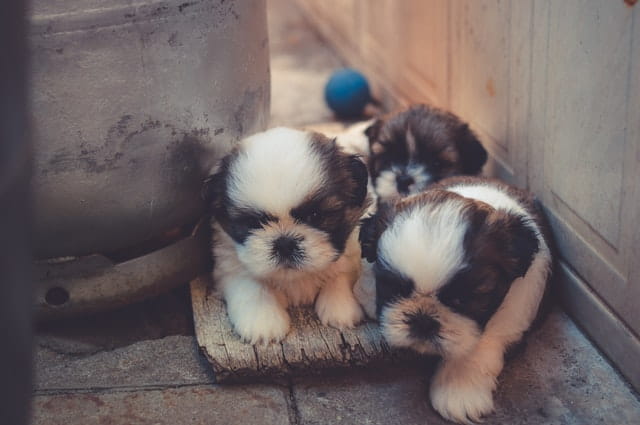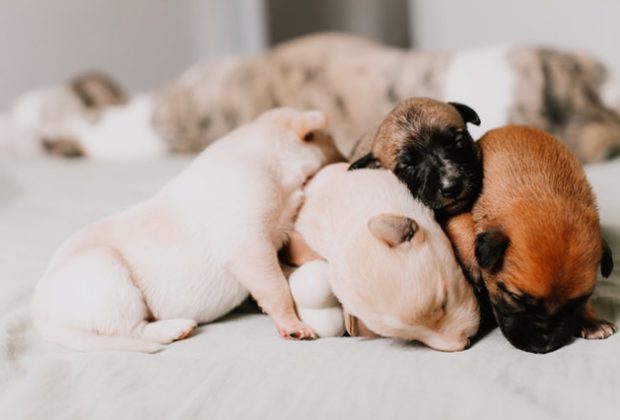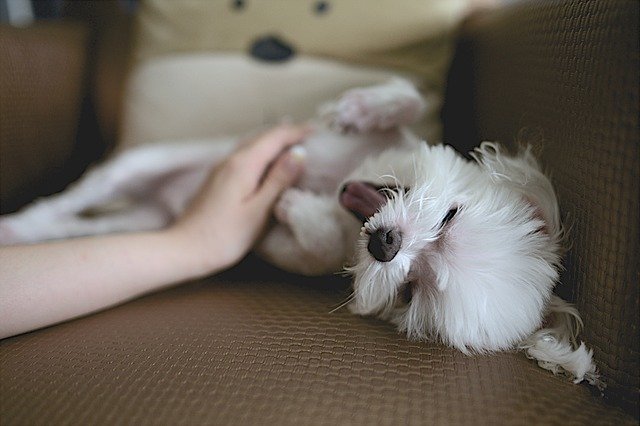So, you’ve settled for a breed that is suitable for you and your family. Great! You’ve done half the work, and the other half is picking a puppy from the litter you are looking at. How do you go about it? How do you ensure you make a good choice when choosing from a litter?
In this article, we’ll look at some important factors to consider and just how to pick a puppy from a litter.
What to Look for When Choosing a Puppy From a Litter
Temperament and Sociability
Temperament and sociability are two necessary factors to consider when selecting your puppy from the litter. When choosing, an easy way to know well-rounded puppies is by looking out for the ones that come to you with heads held high and tails wagging.
When they come to you, pick each of them up and test how much they react to certain touches. A well-rounded puppy is less likely to struggle or nip excessively. It should also settle considerably quickly in your arms.
You should try manipulating their tails, mouth, and feet to see how much they react to being touched or prodded. A well-rounded puppy isn't supposed to overreact to prods or pokes.
You can also test their temperament and reactivity levels by holding them down on their backs for about 30 seconds. Most dogs will not like this initially, but they shouldn’t bite or excessively react when held under light or moderate pressure. This can take a little skill and some confidence to do correctly, so it’s best left for an adult.
Knowing the pup’s reactivity levels is essential, not just for predicting the puppy’s relationship with members of the family but also to give you an idea of how challenging or easy vet visits and grooming may be in the future.
You also want to ensure that you're not picking an overly shy or timid pup. As humans, we naturally tend to feel more pity for the underdog, but you have to understand that fear or timidity is a trait that may not be very easy to train out. You should avoid picking a pup with such characteristics unless you have the skills and patience to transform it into a confident dog from its fearful state. You want a puppy that would naturally want to be with you, play with you or the kids even before it is invited to do so

Meet the Litters’ Parent
One of the most critical steps to picking the right puppy is meeting the litter's parents. They "created" the litter, so it's easy to make your predictions about the litter by seeing how they look, their health, and understanding their behaviors or temperaments. You may also request to see the kinds of puppies they've produced in the past if it isn't their first time breeding.
Things you want to check for include their energy levels, response, ability to settle down after being stimulated, and their offspring's health.
Health
Another factor to consider when you pick a puppy is its health. Look out for the following to ensure that you’re picking a healthy puppy.
- A healthy, well-cared-for puppy should have a healthy, shiny coat. It should also not be too skinny or obese. (Here is a helpful weight guide to help determine what is a good weight and what isn't)
- You should also check their jaws – you want to ensure that it isn't under or over-shot.
- Check the ears, eyes, nose, and genitals to ensure that there are no inflammations or discharge.
- It should have clean teeth, bright eyes and healthy-looking skin around the gums and mouth.
- The litter should have a healthy appetite with energy levels ranging from medium to high.
- Check that the puppy walks and runs comfortably during play. Note, however, that it is not uncommon for puppies to flop around a little during play if it is below 8 weeks of age.
- Check the legs and feet to ensure that they’re facing forward while walking.
- Check also that your pup of choice isn't scratching excessively as it is usually a sign of a flea, lice, or tick infestation.
After narrowing it down to two or three puppies, take those aside separately to check their vision and hearing. You can check their hearing by clapping, dropping something, or clicking behind them to see if they respond. You can check their sights by placing a toy or a treat on the floor near them to ensure that they can see it and reach for it.
Besides the above, a responsible breeder should have and present all required papers proving that the litter and specifically your preferred puppy is of the best quality.
Finally, on health, you should consider booking a quick vet visit to be entirely sure of your new pup’s health status.
The Litter’s Environment
The litter you intend to choose a puppy from should be in an environment that is well-taken care of. The environment where they’re being socialized and cared for should be clean with no smells or clutters around.
If possible, have a look at the bathroom areas for the adult dogs and the pups to make sure it is free of waste and filth of any kind. The less filth, the higher the chances of your pick being healthy.
Behavior Around Other Canines
Before settling for a puppy, you need to put into consideration its behavior around other canines including those in the litter. Your assessment is basically an abridged version of the regular 7-week puppy aptitude test that most breeders do. This test consists mainly of the puppy’s behavior with and around humans and canines.
Even if your puppy gets a “pass” on the test result, you requested from your breeder. You can still carry out your own assessment to confirm their results.
On Interacting with Other Pups:
Below are some ways you can tell your puppy has a healthy relationship with other puppies during their interactions.
- While some breeds are naturally more dominant, a well-rounded puppy should not dominate the litter or other canines excessively.
- It should recognize the signs of discomfort from other pets during play or fights.
- There should be a good give and take behavior in the litter during play sessions. For example, your puppy should be OK with being rolled over and climbed after climbing on top of another pet.
- Finally, check that the puppy does not show any form of aggression when guarding resources among other puppies in the litter.
Final Words
Please make sure you do your part by following the above before settling for a puppy. Don’t just pick the first puppy from a litter that you “connect” with unless you’re certain you can devote the time and resources to training out any undesirable trait you discover later. You don’t want to end up with an excessively willful, dominant dog or an uncomfortably timid dog later, do you? Of course not!
So, ensure you do the right thing by assessing its behavioral characteristics properly before making a final decision.
Finally, if you already own a dominant dog, you may want to check out our guide here on how to introduce a puppy to him once you have made your choice.
About the Author
Kirsten Heggarty
Kirsten created The Pet Handbook with the aim of sharing her knowledge about pets, pet food, healthy habits, and more. All of her advice is based on years of her own experience with her pets, and feedback that she has received from grateful readers about her tips. If you want to know more please read the About Me page.









